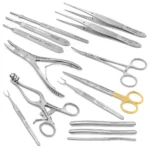When workplace accidents happen, it’s natural to focus on the physical damage—the broken ladder, the spilled chemicals, the faulty circuit. But what’s often overlooked is just as important: the people who saw it happen.
Eyewitness accounts bring the human element into safety investigations. They offer rich details, emotional perspectives, and firsthand facts that no broken tool or CCTV footage can fully capture. Whether it’s a minor injury or a serious incident, understanding what workers saw, heard, and did before, during, and after the event is essential to building an accurate picture of what went wrong—and how to make sure it doesn’t happen again. This is exactly why many safety professionals invest in NEBOSH training, despite the NEBOSH fee. The course teaches how to gather, assess, and document witness testimonies effectively—skills that prove invaluable when real lives and workplace safety are on the line.
Why Training in Investigation Matters
You may wonder, “Can’t anyone just ask a few questions and take notes?” The answer is yes—but if you want real, useful, and unbiased information, formal training is a game changer.
Courses like NEBOSH International General Certificate (IGC) help safety professionals learn the skills to properly collect, interpret, and apply witness accounts. These courses don’t just teach theory. They emphasize real-world application—how to ask the right questions, how to read body language, and how to stay neutral.
Understanding the NEBOSH fee structure is important if you’re considering this training. In Pakistan, the NEBOSH course fee can vary between PKR 130,000 to PKR 180,000, depending on the institute and format (online or in-person). While it’s an investment, it pays off in the form of fewer workplace incidents and more confident, capable safety teams.
Real-Life Example: When One Testimony Changed the Whole Story
Let’s say a worker slips in the loading bay. The CCTV shows the fall, the spilled liquid, and the frantic response of coworkers. But it doesn’t explain why the liquid was there.
During the investigation, a junior worker—nervous but honest—says, “I noticed a slow leak from the delivery truck earlier, but I thought someone else would report it.” That one sentence reveals a hidden procedural gap: unclear responsibility in hazard reporting.
Without that witness account, the root cause might have been misattributed to poor footwear or surface materials.
The Value of Diverse Perspectives
No two people experience the same event in the same way. One worker may notice what others miss. Another might recall details someone else forgets.
That’s why it’s essential to gather multiple statements from witnesses—especially those who were in different locations or roles at the time of the incident. Some might have seen the buildup to the event; others may have responded afterward.
Together, these accounts form a complete timeline, revealing contributing factors that static evidence cannot. Interviews allow safety officers to fill in the gaps, connect dots, and validate or challenge what physical evidence suggests.
How to Collect Witness Statements: A Step-by-Step Guide
Step 1: Secure the Scene First
Before talking to anyone, ensure the area is safe. Witnesses won’t speak freely if they’re still at risk.
Step 2: Approach Respectfully and Calmly
Don’t rush or intimidate. Explain that you’re trying to understand what happened so it can be prevented in the future—not to blame anyone.
Step 3: Ask Open-Ended Questions
Instead of saying, “Did you see the cart hit the door?” ask, “Can you walk me through what you saw happen?” Open-ended questions allow for fuller, more natural responses.
Step 4: Take Notes and Record (With Permission)
Written notes are fine, but audio recording (when allowed) captures tone, hesitation, and emotion, which can be important later.
Step 5: Clarify and Confirm
Repeat back what they said to ensure accuracy: “So you’re saying you saw the forklift reverse before the alarm sounded?”
Step 6: Thank and Follow Up
People often recall additional details later. Let them know it’s okay to come back with more information.
Training Makes It Easier—and More Reliable
In stressful moments, both the witness and the investigator can feel overwhelmed. Training programs like NEBOSH and the OSHA 30-Hour Course help safety officers stay calm, methodical, and clear.
These courses teach how to avoid leading questions, remain unbiased, and handle sensitive conversations—all while respecting privacy and confidentiality.
What About Unreliable Witnesses?
It’s true—memory can be flawed. Emotions may cloud perception. But that doesn’t mean witness accounts are useless. It just means they need context.
A well-trained investigator will cross-reference witness statements with physical evidence, CCTV footage, and procedural logs to identify common patterns and filter out inaccuracies. The goal isn’t to find one perfect story, but to piece together the most accurate version of events.
How Culture Affects Witness Willingness
In some workplaces, especially in high-pressure or hierarchical environments, workers may hesitate to speak up.
They might fear blame, embarrassment, or even retaliation. That’s why fostering a “just culture”—where people feel safe reporting mistakes—is essential.
This cultural shift doesn’t happen overnight. It takes consistent leadership, training, and a clear message: “We want to learn, not punish.”
Courses like NEBOSH Managing Safely go beyond technical knowledge. They emphasize the importance of communication, trust, and ethical leadership—all of which play a huge role in whether workers feel comfortable sharing what they know.
NEBOSH Fee: An Investment in Safer Workplaces
We’ve already touched on the NEBOSH fee, but it’s worth repeating: what you spend now saves more in the long run. Accidents cost time, money, trust, and sometimes lives.
When a safety officer is trained to collect proper witness accounts, they can prevent repeated mistakes and build a culture of safety. Whether you’re a supervisor, manager, or entry-level worker hoping to grow, the NEBOSH IGC or NEBOSH Managing Safely certifications are practical tools to reduce risk.
Want to Learn From the Best?
If you’re serious about improving workplace safety, don’t just settle for any training provider. Read more about the Best NEBOSH Institute in Pakistan and choose an institute that offers strong support, real-world case studies, and flexible learning modes.
Final Thoughts
In the end, witness accounts are the bridge between raw facts and real understanding. Machines may track events, but only people can explain feelings, decisions, confusion, and quick reactions.












